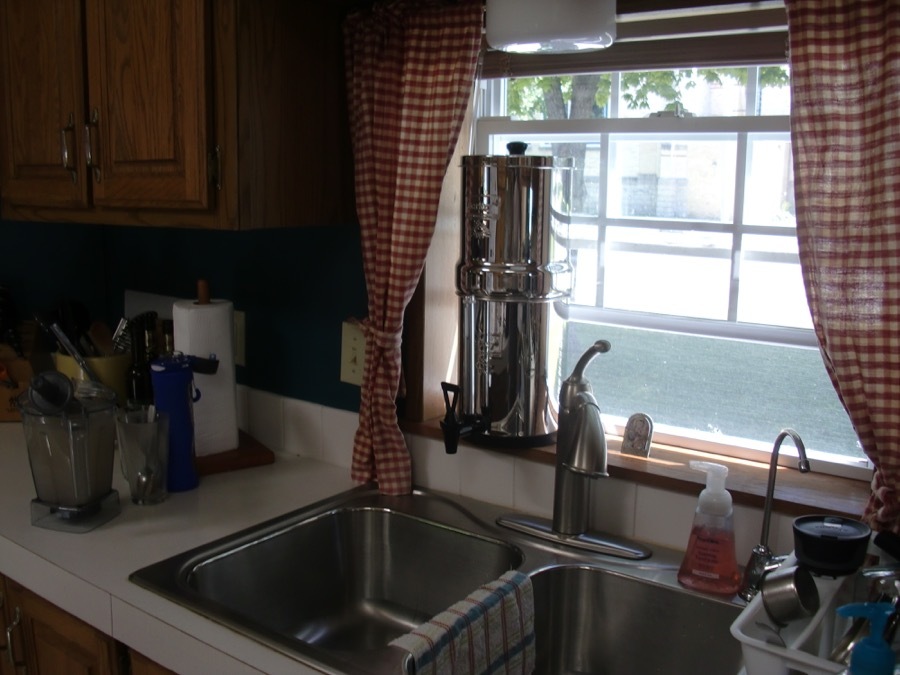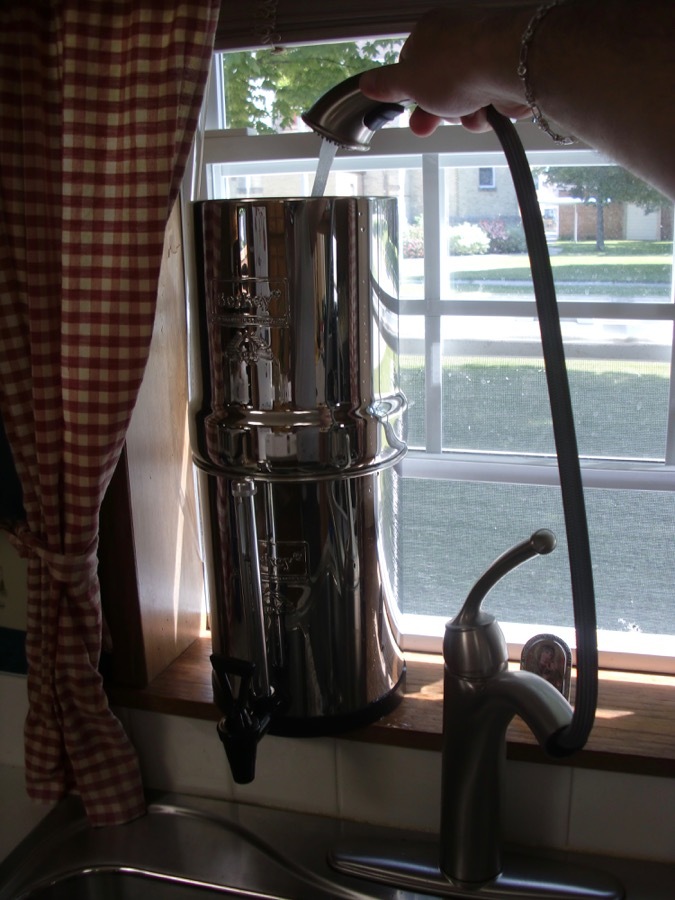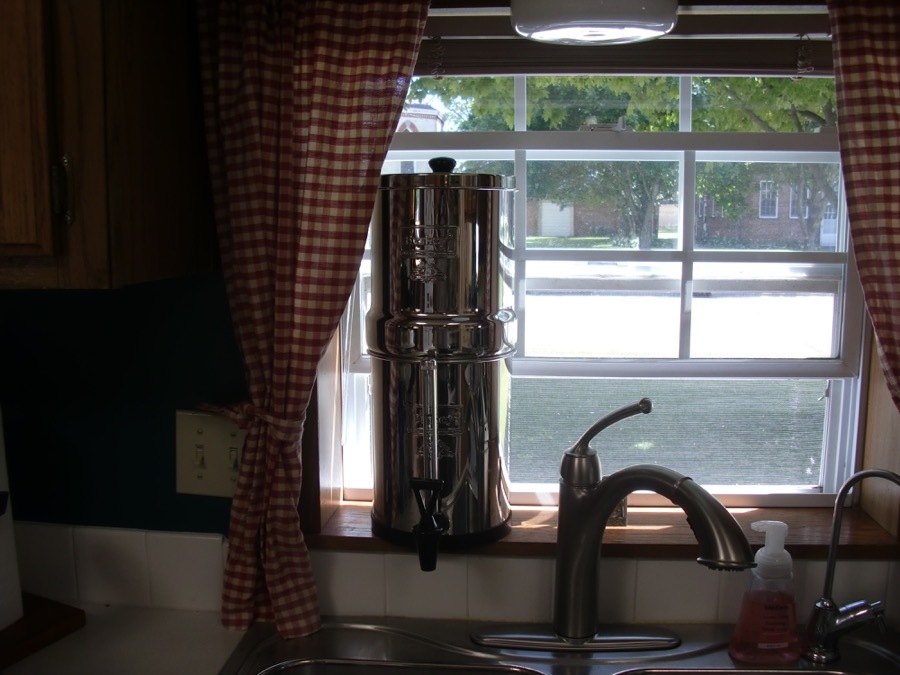I still remember the day I quit buying soft drinks. I was standing in the aisle at the grocery store debating between regular, diet, caffeine-free, real sugar, and the latest weird flavor of Mountain Dew. Suddenly it hit me: there are no good choices. Neither the sugar nor the sweet-tasting chemicals are actually good for me. I passed on the pop that day. At first I felt funny ordering "just water" at restaurants. But as I drank less sugar I found it harder to stomach a cola. Even fruit drinks seem sweet to me now. I stick to mostly water now, supplemented by natural drinks like coffee, hot tea, and fermented barley water. Which is why I came to own a Berkey water filter.
When you drink mostly water you start to think about water quality. I tried various filtration methods and researched some alkaline systems. The problem is that most filters are pretty vague about what they actually filter. And many are even vague about how much water they filter (how much water is "filter lasts 3 months"?). The Berkey, on the other hand, is very explicit. You can read the specs and download lab test results on their website. But a filter that can take pond water seemed like overkill for city water. It was also expensive; their standard "Big Berkey" costs $258.

What finally sold me was the Flint, Michigan water crisis. If you had a Berkey, you would have been safe (filters 99.9% of the lead). The local town up the road had high arsenic levels (filters 99.9%). And I saw a disturbing news report about nitrite poising from farm wells (filters >95%). Plus it doesn't filter out minerals. A standard two-filter Berkey system can filter 6000 gallons. That means you pay 4.3 cents per gallon (1.1 cents/litre). The cost goes down with replacement filters. It's a no-brainer.
I ordered the Travel Berkey with the sight-glass spigot and add-on flouride filters. It consists of two main parts, both made of stainless steel: the upper part contains the two filter elements, the lower part stores the filtered water and contains a spigot for dispensing. There is also a rubber base. This rubber base smelled very strongly at first and gave the packaging an unpleasant odor. It has since dissipated. Assembly is required. It's not that hard once you understand it, but the directions don't help very much. I recommend watching YouTube videos. At first it filtered very slowly. I hadn't primed the filters correctly because my faucet isn't built correctly. I had to take them to a sink with a traditional faucet and run water through them backwards. Then it worked much better.

I put it in my window sill above the sink. It's not really big, but it's tall and heavy when filled. The parts are sturdy and it should last a long time. My only complaint is with the optional fluoride filters. They hang into the lower tank and reduce its capacity significantly. If you are not careful the lower tank will overflow. I have found if you wait until the lower tank is drained it can then handle a full fill without a problem. I tend to fill it once a day; I can fill it right from the sink faucet. I use about a gallon a day. At that rate I will need to change out the filters every 16 years.
Right away I started noticing the chlorine smell of unfiltered tap water. Back when I used to drink the chlorine the smell didn't bother me. Visitors comment on how good my water tastes. A nice fresh glass of filtered water is surprisingly satisfying. I don't think of it as "just water" anymore.
